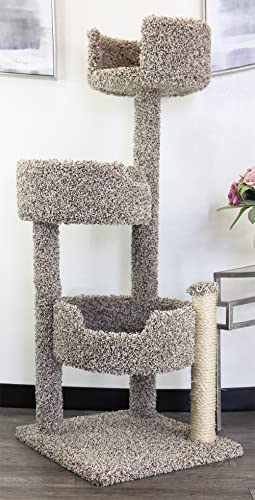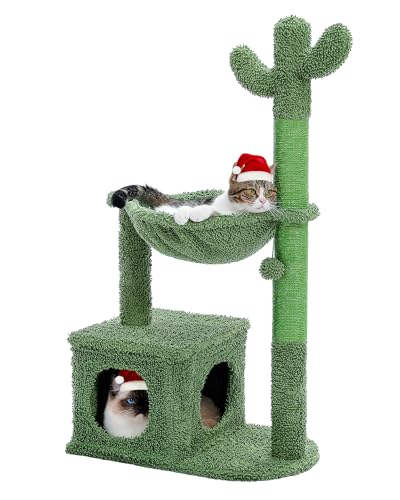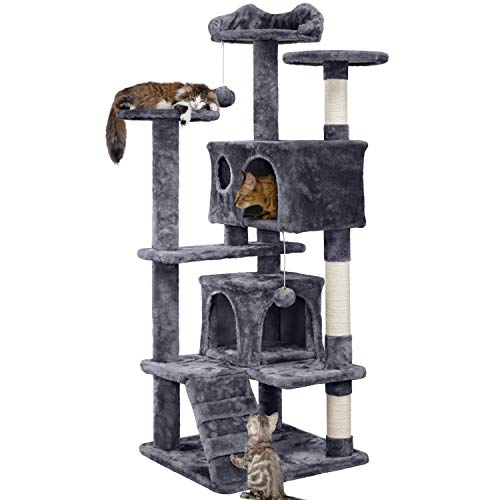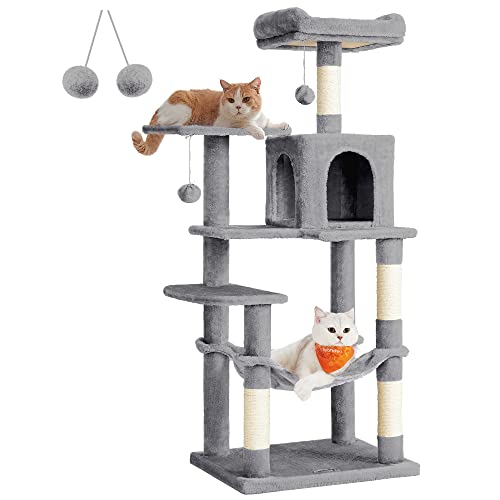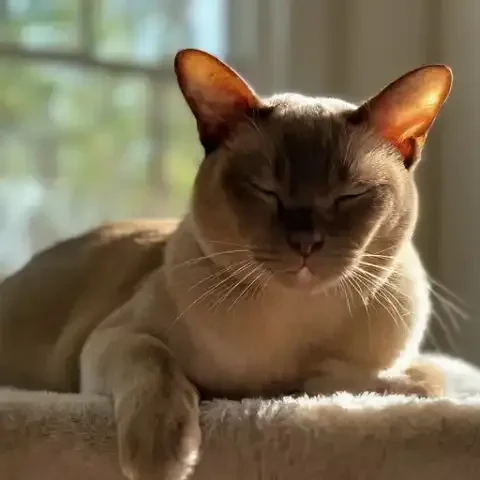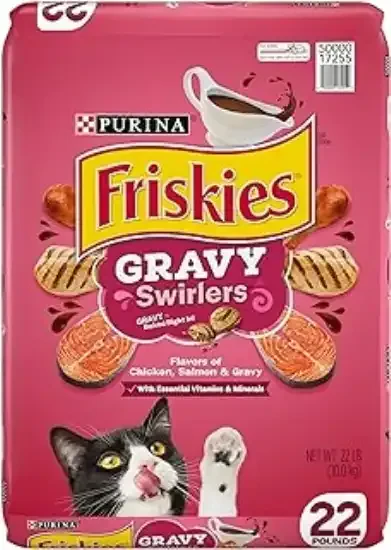Ever found yourself staring intently at your cat, listening to their symphony of meows and rumbling purrs, and wondering – what on earth are they trying to tell me? You're not alone. For centuries, humans have lived alongside these enigmatic creatures, fascinated by their independent spirits and their seemingly mysterious communication. While cats can communicate through scent, body posture, and even subtle shifts in whisker position, their vocalizations – meows and purrs – are often the most readily perceived and, let's be honest, the most captivating to us humans.
These aren’t just random noises, these feline sounds. They are, in fact, a complex and nuanced language, particularly designed for communication with us, their human companions. Understanding the subtle variations in your cat's meows and the different depths of their purrs isn't just about satisfying curiosity; it's the key to unlocking a deeper connection with your feline friend. It's about strengthening that unique human-cat bond, reducing frustrations for both you and your cat, and ultimately, becoming a more attuned and responsive cat owner. Imagine being able to truly decipher your cat's needs – whether it’s a plea for a fresh bowl of food, a demand for playtime, or a gentle reassurance they need when feeling unwell. This deeper understanding can even alert you to potential health issues early on, as changes in vocalization can be an important indicator of a cat's well-being. So, let's embark on a journey into the secret language of cats, starting with the fascinating world of meows and the comforting rumble of purrs. We'll decode the different sounds, explore their meanings, and learn how to truly listen to what your feline companion is trying to tell you.
Let’s first unravel the mysteries of the meow, that quintessential cat sound. Interestingly, adult cats rarely meow at each other. It's a vocalization they’ve largely developed and refined specifically for communicating with humans. Think of it as a learned language, a feline adaptation to bridge the communication gap between species. So, when your cat meows at you, it’s almost like they’re speaking directly to you, using a vocabulary tailored just for your ears. But not all meows are created equal. Just like human language has different tones and inflections, cat meows are surprisingly varied, each carrying a distinct meaning depending on its sound, pitch, and, most importantly, the context in which it's delivered.
First, consider the greeting meow. This is often a short, upbeat, almost cheerful little “meow!” Think of it as your cat’s equivalent of a friendly "Hello!" or a bright "Hey there!" It’s their way of acknowledging you, announcing their presence, and saying, “Notice me, I’m here!” You'll often hear this greeting meow when you enter a room, perhaps after being away for a short while. It might be the sound that wakes you in the morning, a gentle feline “good morning!” Or it might be their cheerful welcome when you return home after a long day. Accompanying this upbeat meow, you’ll often see relaxed and welcoming body language. Their tail might be held upright, a clear sign of feline friendliness, and they might even rub against your legs, further solidifying their warm greeting and seeking your attention in return.
Then there’s the demanding meow. This type of meow is often more persistent, perhaps a little louder, and usually delivered in a medium pitch. This is the “I want something!” meow, the feline equivalent of a polite (or sometimes not-so-polite) request. They’re saying, “Give me attention!”, “I’m hungry!”, “I’m thirsty!”, “I need to play!”, or simply, “I need… something!”. You'll likely encounter this demanding meow around their food bowl, especially if it’s looking a little empty. They might meow at you near a closed door, indicating they want to go out, or perhaps just move to another room. They might meow persistently when they want to play, nudging toys towards you or batting at your ankles. Often, this meow is accompanied by pacing, a purposeful rubbing against your legs (almost like they’re herding you towards their desired object), or even leading you directly to the source of their demand, be it the food bowl, the toy box, or the enticingly closed door. If ignored, this demanding meow can easily escalate into a more insistent and attention-grabbing vocalization.
And escalating they can. Enter the urgent or insistent meow. This is a meow that grabs your attention immediately. It’s loud, often high-pitched, and can be drawn-out, almost sounding like a plaintive wail. This is the feline equivalent of shouting, “Pay attention NOW! Something is wrong! I need help!”. This is a cry of distress, a signal that something is genuinely amiss in their feline world. It could indicate real hunger or thirst, perhaps pain from an injury or illness, or the unsettling feeling of being trapped somewhere – maybe unintentionally confined in a closet or a carrier. It could also signal feeling threatened by something in their environment, or even general anxiety and unease. When you hear this urgent meow, it’s crucial to pay close attention and investigate immediately. Accompanying body language will likely reflect their distress – restlessness, frantic pacing, potentially hiding or trying to escape, a tense and alert posture, and even dilated pupils, indicating fear or anxiety. It's essential to treat these urgent meows with seriousness and promptly try to determine the cause of their distress and offer assistance.
Then we have the charming chirp or trill. This isn’t a “meow” in the traditional sense, but rather a short, bird-like sound, almost a little rolling "mrrp?" or "brrr?" This delightful vocalization often expresses excitement, mild frustration, or anticipation. It’s like they’re saying, “Look at this!”, “Come with me!”, or even, in a slightly exasperated tone, “Where are you going?!” You'll often hear chirps and trills when a cat spots prey – perhaps birds flitting outside the window, squirrels scampering in the yard, or even a tempting dust bunny skittering across the floor. They might chirp when they want you to follow them, leading you to their favorite toy or perhaps towards their food bowl. It’s a sound of focused attention and often a gentle invitation to engage with them. Look for accompanying body language like a focused gaze, often directed at something specific – the window, a toy, or you. Their tail might twitch with excitement, and their ears will likely be pointed forward, fully engaged with whatever has captured their interest.
Finally, we have the yowl or caterwaul. This is a longer, lower-pitched, often moaning sound, quite distinct from other meows. It can sound almost mournful, and often carries a sense of distress or discomfort. A yowl can have several meanings depending on the context. It can indicate pain or illness, particularly in older cats. It can also be a sign of cognitive decline in senior felines, a manifestation of confusion or disorientation. Yowling is frequently associated with territorial disputes, especially outdoors, where cats might yowl to warn off rivals or declare their territory. And, famously, the caterwaul is the unmistakable mating call of unspayed or unneutered cats in heat, a loud and persistent vocalization designed to attract attention. Accompanying body language can be varied. They might be restless and pacing, or in territorial situations, the yowl might be accompanied by hissing or growling. If the yowl is due to pain or illness, you might see a hunched posture or other signs of discomfort. It’s important to remember that while some yowling can be normal in territorial contexts or mating season, persistent or new-onset yowling, especially in older cats, should be investigated by a veterinarian to rule out underlying medical or behavioral issues.
Now let’s delve into the enigmatic world of the purr, that deep, rumbling vibration that emanates from our feline companions. While often associated with pure contentment, the purr is far more complex than just a simple expression of happiness. It’s a multifaceted vocalization with a range of meanings, from the classic purr of contentment to purrs of self-soothing and even solicitation.
The classic purr, the one we all know and love, is indeed the purr of happiness and contentment. This is the deep, rhythmic rumble that vibrates through your hand as you stroke your cat, the soothing sound that fills the room when they’re curled up in your lap. This purr signifies pure feline bliss – “I’m happy!”, “I’m relaxed!”, “I feel safe and comfortable!”. This purr typically occurs during moments of affection – when you’re petting them, cuddling, or simply grooming them. It accompanies moments of relaxation, when they’re settled in a warm, sunlit spot, feeling secure and at peace in their environment. It often occurs when they’re enjoying their favorite foods, a rumbling symphony of satisfaction as they indulge in a delicious meal. Accompanying body language during a contentment purr is usually very relaxed and open. You might see kneading, that instinctive pawing motion reminiscent of kittenhood. They might exhibit slow blinking, a clear sign of feline trust and affection. Their fur will feel soft and relaxed, and their eyes might be closed or half-closed in blissful contentment.
But purring isn’t always about happiness. Interestingly, cats also purr when they are stressed, in pain, or feeling unwell. This is the purr of self-soothing and healing. While scientists are still unraveling the exact mechanisms, current theories suggest that purring, with its specific low frequency vibrations, might actually have therapeutic benefits. These vibrations are thought to promote bone density, stimulate tissue regeneration, and even release endorphins, acting as a natural pain reliever and stress reducer. So, in these situations, the purr takes on a different meaning – “I’m stressed!”, “I’m in pain!”, “I’m anxious!”, “I need comfort!”. You might hear this type of purr when a cat is injured, sick, recovering from surgery, or simply feeling anxious or overwhelmed. It’s their way of calming themselves, a self-soothing mechanism, and potentially even a way to promote their own healing process. The accompanying body language can be more varied in this context. They might appear withdrawn, still, or even try to hide. Conversely, they might actively seek closeness and comfort from their owner, seeking reassurance through physical proximity and gentle touch. It's important to note that purring in these situations might be quieter, less rhythmic, or feel less ‘full-bodied’ than a purr of contentment.
Finally, there’s the soliciting purr, sometimes referred to as a “purr-suasive” purr. This purr is often used to get something they want from you – typically attention, food, or petting. Think of it as a gentler, more subtle demand than a meow. They’re saying, “Give me attention!”, “Feed me!”, “Pet me!”, “I want something from you!”. This purr is often employed around feeding times, when they’re seeking your attention, or when they want to initiate interaction with you. It can be combined with other soliciting behaviors like rubbing against your legs and gentle, almost conversational meowing. Accompanying body language might include rubbing, weaving between your legs, gentle nudging with their head, soft gaze directly at you, or even a gentle pawing motion at your leg or arm. This is a more subtle and persistent way of asking for something, a gentle yet effective tactic to engage your attention and get their needs met.
However, understanding cat vocalizations goes far beyond just deciphering meows and purrs in isolation. Context and body language are absolutely key to truly understanding what your cat is communicating. Vocalizations don't exist in a vacuum; they are always part of a larger communication package. To become a true cat whisperer, you need to learn to "read the full cat package," taking into account their entire demeanor, posture, and the situation in which the vocalization occurs.
Consider tail talk. A cat's tail is a remarkably expressive appendage. An upright tail often accompanies a greeting meow, signaling friendliness and confidence. A twitching tail can add to the excitement of a chirp, indicating focused attention and anticipation. A tucked tail, however, might accompany an urgent meow or a self-soothing purr, signaling fear, anxiety, or unease. A swishing or thumping tail can indicate agitation or frustration, modifying the meaning of a meow or even a purr.
Ear signals are equally important. Ears pointed forward indicate alertness and interest, often seen with chirps or greeting meows. Ears turned back or flattened against the head, however, signal fear, aggression, or anxiety, and might be present with an urgent meow or a yowl. Body posture provides further clues. A relaxed posture, stretched out and comfortable, often accompanies a contentment purr. A tense, hunched posture might indicate pain or fear, modifying the meaning of a purr or yowl. Even facial expressions play a role. Dilated pupils, wide eyes, often accompany urgent meows or yowls, indicating fear or distress. Whisker position, whether relaxed, forward, or flattened, can also subtly modify the meaning of vocal cues.
Let’s look at some examples of how to combine vocalizations with body language and context for a more accurate interpretation. Imagine your cat greets you at the door with a short, upbeat “meow!” and an upright, gently waving tail. This is clearly a greeting meow, a friendly and happy welcome. Now picture your cat persistently meowing at their empty food bowl while pacing back and forth and rubbing against your legs insistently. This is a demanding meow, a clear indication of hunger and a request for food. Contrast this with a scenario where you find your cat hunched in a corner, quieter than usual, emitting a soft, almost trembling purr. This is likely a self-soothing purr, a sign of potential distress, pain, or illness. Finally, imagine your cat chirping excitedly while perched on the windowsill, gazing intently at birds flitting in the garden, their tail twitching with anticipation. This is a chirp or trill, expressing excitement and focused attention, inviting you to share in their avian observation.
It's also vital to remember that cats, just like humans, are individuals. They have unique personalities, quirks, and, yes, their own individual communication styles, what we might call their personal "dialect" of meows and purrs. Some cats are naturally more vocal than others, chattier companions who readily express themselves through a wide range of meows. Others are quieter, more reserved in their vocalizations, preferring subtler forms of communication. Even within the different types of meows and purrs we’ve discussed, there can be individual nuances, subtle variations in pitch, tone, and rhythm that are unique to your cat.
To truly understand your cat’s unique language, you need to become a dedicated “cat listener,” an active observer of your feline friend over time. Pay attention to the specific types of meows your cat uses in different situations. Notice how their purr sounds and feels when they are content versus when they seem unwell or stressed. Observe the body language that consistently accompanies different vocalizations – tail positions, ear signals, body posture, facial expressions. You can even keep a mental (or written) note of these patterns, consciously tracking your cat's vocalizations and the contexts in which they occur.
The effort you invest in learning your cat’s individual vocal “dialect” is richly rewarded. It deepens your bond, fosters mutual understanding, and enriches your relationship in profound ways. You begin to truly “hear” what your cat is saying, and they, in turn, sense that you are listening, responding, and understanding their unique feline language.
Finally, be alert to changes in your cat’s vocalizations. Sudden or significant shifts in their usual patterns can be important signals, indicators that something might be amiss. Increased vocalization, especially an increase in meowing, can be a red flag. While some cats are naturally more vocal, a sudden and unexplained increase in meowing can signal medical issues, such as hyperthyroidism or cognitive dysfunction, especially in older cats. It could also indicate increased stress, anxiety, or attention-seeking behavior that has become excessive. If you notice a sudden, persistent increase in vocalization, especially if it’s accompanied by other behavioral changes like changes in appetite, litter box habits, or activity levels, it’s important to consult with your veterinarian to rule out any underlying medical causes.
Conversely, a decrease in vocalization, a usually talkative cat suddenly becoming unusually quiet, can also be a cause for concern. This could indicate illness, pain, lethargy, or even depression. If a normally vocal cat becomes suddenly quiet or withdrawn, particularly if accompanied by other signs of illness like loss of appetite, lethargy, or changes in grooming habits, a veterinary check-up is warranted. While less definitive, changes in the sound or frequency of a purr, or if a cat suddenly stops purring altogether, could also be subtle indicators of a problem, particularly when combined with other concerning signs. And as mentioned earlier, while some yowling can be normal, any new onset or excessive yowling, especially in older cats, should be checked by a vet to rule out potential medical causes like cognitive dysfunction or pain.
In conclusion, understanding your cat’s meows and purrs is an ongoing journey of observation, attentiveness, and deepening connection. Meows, primarily for human ears, are varied and nuanced, each carrying specific meanings depending on their sound, context, and accompanying body language. Purrs, equally complex, express not only contentment but also self-soothing and even solicitation. By becoming an active listener, by paying attention to the full "cat package" of vocalizations, body language, and context, you can unlock a richer level of communication with your feline companion. And by tuning into this subtle symphony of meows and purrs, you not only unlock a deeper understanding of your cat’s needs and desires, but also enrich the very bond you share, deepening the understanding between two very different, yet wonderfully connected, species. You’ll find yourself not just hearing your cat, but truly listening, and in turn, they will sense that you are finally, wonderfully, speaking their language, even if it’s just through the silent language of understanding.

